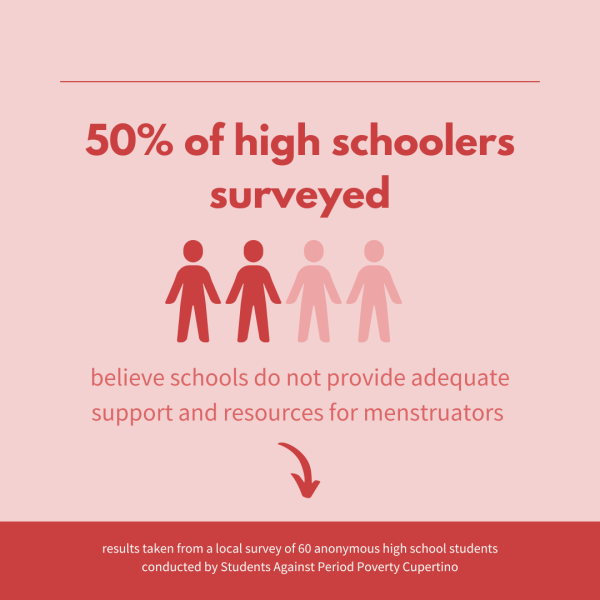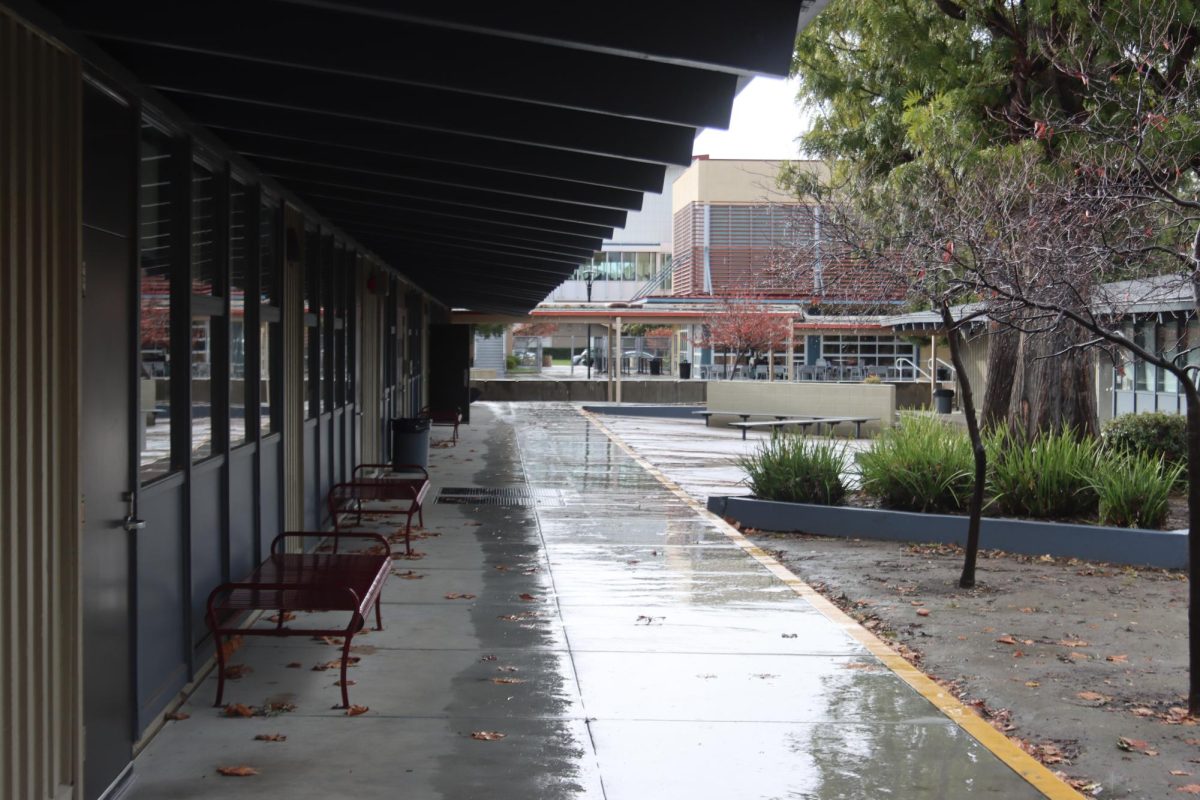Cupertino High School’s comprehensive sexual health education is a unit in the ninth-grade Introduction to Biology course. The curriculum focuses on relevant topics such as making healthy decisions, sexual orientation, preventing pregnancies, etc. However, menstruation is minimally covered despite its importance in understanding sexual health.
Menstruation, more commonly known as a period, is a multifaceted subject relating to the regular discharge of blood from the uterine lining. Menstruation directly affects about half of the student population at CHS, and several health and social issues surrounding menstruation are critical for all students to understand. For instance, menstruators experience various health effects during their cycle, like abdominal cramps and mood swings. Educating students about these health effects will alleviate ignorance and promote empathy in both menstruators and non-menstruators. Proper education on period stigma is also vital to fostering an environment where menstruators are not ashamed of their periods, considering the lack of social acceptance in discussions regarding menstruation.
While menstruation is briefly mentioned in the curriculum when covering physiology and the reproductive system, it is not a primary focus or objective because of the assumption that it was already extensively addressed in previous grades.
Said Life Science teacher and Science Department Lead Daniel Stavis, “We don’t want to just look at what happens in ninth grade, but what happens across the scope of comprehensive sexual health education with the lens of age appropriateness. I think it’s important that education about menstruation begins before the high school age.”

The California Healthy Youth Act requires CHS’s feeder elementary and middle schools from the Cupertino Union School District to teach students about human growth and development in fifth and seventh grades. The proposed curriculum aims to teach how stress and environmental factors contribute to the timing of menstruation, proper menstrual hygiene, defining the various menstrual products and more related topics. Unfortunately, some students do not believe they received sufficient menstruation education before high school.
Said Hannah Wawda, a CHS junior and Assistant Director of local period poverty activism nonprofit Students Against Period Poverty Cupertino, through a message interview: “I don’t remember learning anything about menstruation at [CHS]. In elementary school, I remember we vaguely learned about menstruation; however, the curriculum wasn’t very thorough. In middle school, I remember being separated by gender and being taught about menstruation.”
The primary problem in the inadequacy of menstruation education in high school is the time constraint. Introduction to Biology teachers only have two weeks out of the school year to dedicate to comprehensive sexual health education.
“There’s a lot of things that I wish we had more time to spend on, lots of things where, if we had more time, we would get more in-depth and look at it from a more nuanced perspective,” Stavis said.
CHS teachers have the flexibility to customize the health curriculum on the professional learning community level, which are the teacher teams at schools. They can choose to address specific topics provided by Health Connected, the organization partnered with the district, within the boundaries of the law. If students notice areas for improvement in the curriculum, it is vital that they communicate this and prompt their teachers to make necessary adjustments. 
The current CHS comprehensive sexual health curriculum covers appropriate topics pertaining to high schoolers. However, the insufficient menstruation coverage in earlier sexual health curricula leaves the responsibility to high schools to educate students on such matters thoroughly.












